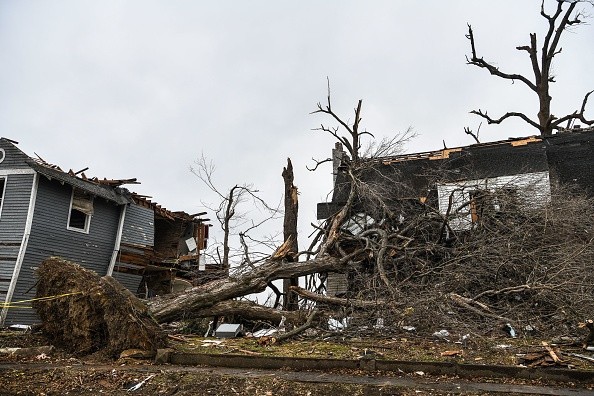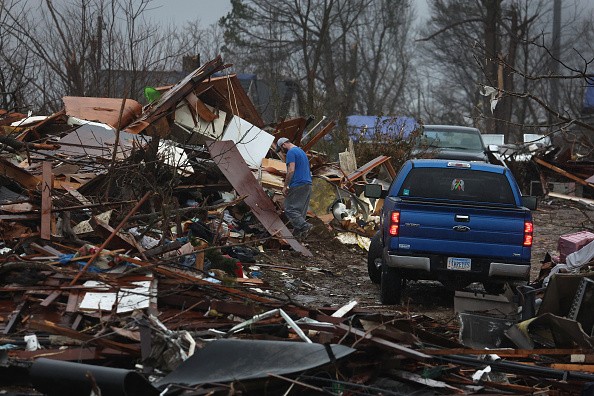Two tornado tracks in Tennessee and Kentucky have already surpassed the December record with scientists confirming 40 twisters so far.

Tornado Touched Down Western Kentucky
There was a preliminary damage rating of EF4 given to the large tornado that ripped through western Kentucky on Dec. 10 with an estimated path length of 163.5 miles and peak winds of 190 mph, according to the National Weather Service (NWS).
According to NOAA Storm Prediction Center data dating back to 1950, this tornado is among the top 10 longest tornadoes ever recorded. It's also the longest December tornado on record.
The tornado ripped through the hamlet of Mayfield, Kentucky, destroying buildings and leaving a trail of destruction in its wake. The rehabilitation process for tornado survivors is expected to be a lengthy one, according to officials.
To the south, preliminary indications indicate another long-track tornado with a path of 122.7 miles or more, beating the previous record of 121.7 miles recorded on December 23rd, 1956.
During any month of the year, the Tri-State Tornado of 1925's 219-mile track is the longest ever documented in the United States, according to Accuweather.
Last week's devastating tornado outbreak killed at least 89 people in five states, including at least 75 in Kentucky, according to Gov. Andy Beshear on Thursday. Any verified EF5 tornado in the United States would end a prolonged dearth of EF5 twisters in the country and would be the third EF5 tornado ever recorded in December, after twisters in 1957 and 1952.
Oklahoma's Most Deadly Tornado
The final EF5 tornado struck the west side of Newcastle, Oklahoma, and quickly turned strong as it traveled east-northeast past Moore and into the southern portions of Oklahoma City.
At least 24 people were killed and others were injured in this tornado, which was the worst in Oklahoma's history. At its broadest, the tornado measured more than a mile in diameter and was on the ground for 14 miles.
In order to assist rescuers navigate the apocalyptic scene, municipal authorities printed new street signs as quickly as possible once they arrived.
While the temperature and pressure of a storm may be measured at the surface, tornadoes are not. Surveyors must use the Enhanced Fujita (EF) scale to evaluate the strength of the tornado's winds.
An upgrade to the original F-scale developed by meteorologists and wind engineers to enhance damage assessments was introduced in February 2007 to the United States.

Efforts to Determine the Strength of the Tornado
An in-depth assessment of each tornado outbreak might take weeks, or even months depending on the resources available. NWS said trying to identify tornado intensity is like doing forensic meteorology. The NWS presented the statement in an article.
If a tornado or straight-line winds were responsible, meteorologists must put together indications from a damaged area to estimate how powerful the winds that produced it were.
Damage surveys have been increasingly precise over the last 30 years because of advances in technology. In the past, warning coordination meteorologist Brian Smith at NWS Omaha used maps, pencils, pens, and an odometer as a reference.
Now, surveyors can use their mobile devices to upload data, rate damage on an EF scale, and share photos of damage using the Damage Assessment Toolkit (DAT).
Related Article : Two-Month-Old Infant Becomes Youngest Casualty in Catastrophic Tornado That Hit Kentucky
For more news, updates about tornadoes and similar topics don't forget to follow Nature World News!
© 2025 NatureWorldNews.com All rights reserved. Do not reproduce without permission.





